| Published
on 17
Jul
2013 |
All rights reserved.
|
|
|
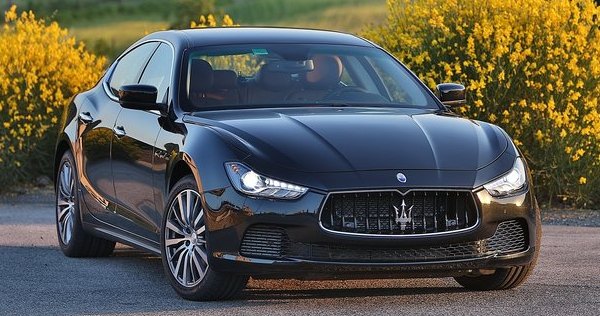
|
You won't be a
stranger to the name Ghibli if you have followed our classic car
archives or, well, if you are old enough. Maserati used this name twice
before. The first time was on a Giugiaro-penned GT launched in 1967.
The second was a derivative of the Biturbo family produced in the
1990s. They had nothing in common except the trident badges. Now the
same name is used on an even more different car – a 4-door sedan! This
is the smaller brother of Quattroporte. It is Maserati's
first entry into the mainstream E-segment,
which means it will compete with BMW 5-Series, Mercedes E-class, Audi
A6, Jaguar XF etc. It is also
the first ever Maserati to employ diesel engine. Both are part of the
drive to increase Modena's sales from 6,300 to 50,000 units annually
within 3
years. Inevitably, to achieve this target the Ghibli has to be cheaper
than Maserati products used to be. It seeks cost cutting by sharing
platform and production line with Quattroporte, by using only V6
engines and by outsourcing diesel engine from VM Motori, the Italian
diesel engine manufacturer that is half-owned by Fiat. Besides, some
less significant bits are sourced from Chrysler. Consequently, the
Ghibli range is priced between £49K and £63K, about the
same level as high-end 5-Series but cheaper than the 4-door coupes like
6-Series Gran Coupe, Mercedes CLS and Audi A7 with which Maserati
reckons it compete. For an Italian car with the trident badge, it looks
like a bargain. Does it sacrifice anything to go mainstream?
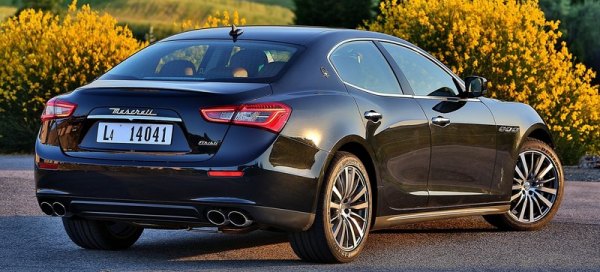
|
Certainly not the looks. Although the Ghibli is not the sexiest
Maserati (that has to be GranTurismo for sure), its proportion is still
more GT than sedan. You can easily see the front-mid engine layout,
which separates it from its more conventional German rivals. Maserati
envelops the mechanicals with
clothes that look sleek and muscular enough. The frameless windows are
another implications of its sports car genes. Ditto the single piece of
rear side window (i.e. without rear quarter window) that resembles the
last generation Quattroporte. The triangular C-pillar with trident logo
and the triple side vents are also carried over from that car. My only
reservation is the square front grille, which doesn't look as good as
the oval one on GranTurismo. I have no idea why its designers opted
for this change. Otherwise, this is a very sporty and distinctive
design that is worth the highest regard among class rivals.
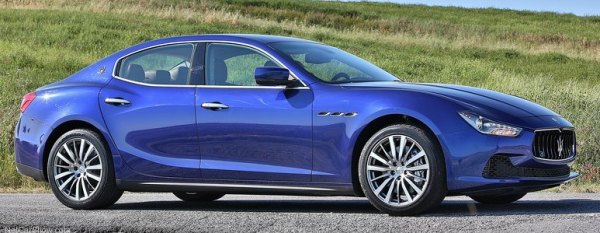 |
As mentioned before, the car sits on the same platform as
Quattroporte, but its wheelbase is shortened by 170 mm and the overall
length shrinks from 5.26 meters to just under 5 meters to fit the class
norm. However, its width is identical while the roof is 20 mm lower, so
the body profile is sportier than its bigger brother.
The chassis is again made primarily of steel but aluminum is
extensively used in the front structure (subframe, cross members,
suspension towers etc.), the double-wishbone and multi-link
suspensions, the bonnet and all 4 doors. That said, the Ghibli is only
50 kg lighter than the equivalent Quattroporte, so its 1.8-ton-plus
kerb weight is a little on the heavy side of the E-segment. On the plus
side, no rivals can match its balance. The rear-drive petrol models
have 50:50 front to rear weight distribution while diesel and Q4
(4-wheel-drive) options have another one percent of weight shifted to
the front. Note that it fails to match the old Quattroporte though
(47:53 for automated manual or 49:51 for automatic), as the engine is
positioned a little forward in the new platform to free up cabin space,
and the transmission is no longer rear-mounted.
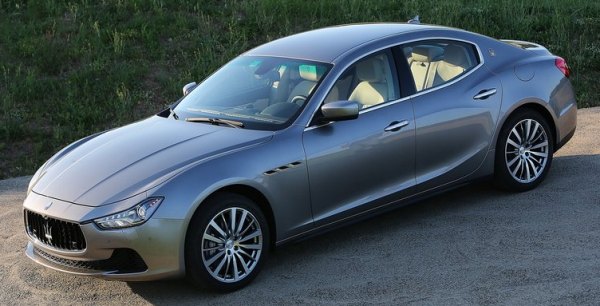 |
Just when you think its mechanical layout has become
mainstream, Maserati responded by keeping the power steering hydraulic,
differing to the EPS that has become industrial norm. It also resists
the temptation to use huge wheels – all models ride on 18-inch items.
This, combines with the optional "Skyhook" adaptive dampers,
theoretically should give it a good ride quality. Meanwhile, the Brembo
brakes and standard limited-slip differential also promise good
dynamics. Same goes for the Q4 system, which uses a rear-biased, 35:65
torque split at low speed and gradually shifts to RWD at
higher speed.
I have introduced the 3.0-liter twin-turbo petrol V6 already in the
review of Quattroporte, but never mind to repeat once more. This engine
is designed by Ferrari and built at Maranello, just like the old
naturally-aspirated V8. Thanks to forced induction, dual-VVT and direct
injection, it is capable to produce a remarkable 410 horsepower, and
406 pound-foot of torque across a wide band, more than any rivaling
six-cylinder engines. Pairing with the compulsory ZF 8-speed automatic,
this gives the Ghibli S 177 mph top speed and 0-60 mph in 4.8 seconds
(or 4.6 sec for 4WD), nearly as quick as the V8-powered 550i, E500 and
S6.
Performance aside, the Ferrari V6 is just as responsive and flexible as
any rivals, but what lifts it above them is a really thrilling
soundtrack, which is rawer, angrier and louder when you switch on Sport
mode (which triggers the bypass valves in exhaust) and rev the V6
towards the last 1000 rpm. Like a sports car engine, it pops and
crackles on the overrun. Ferrari does know how to make an engine
emotional, even though with only 6 cylinders to play with!

|
Lesser Ghiblis get either the 330 hp version of the same
petrol V6 or the aforementioned VM Motori 3-liter turbo diesel V6. The
former is slightly stronger than 535i and A6 3.0T, while the
latter faces a steeper challenge against 535d and A6 3.0
BiTDI. VM's diesel engines have never been the best of the class, as
you can see their services on Daewoo/Chevrolet, Hyundai-Kia and Lancia
Thema. This single-turbo V6 is no exception. Its maximum output of 275
hp and 442 lbft is by no means bad, but its power band is concentrated
to the mid-range, refinement is average and the noise is uninspiring –
a sharp
contrast to the Ferrari V6. Even though it returns good consumption and
emission figures, it is not recommendable to enthusiasts. Moreover, the
heavier diesel motor also degrades the handling and ride quality a bit.
Good news is: a new twin-turbo diesel V6 is under development now and
should arrive within 2 years. It will offer up to 350 hp and promise
better refinement...
Enter the cabin, you will be delighted with its leather, wood and
aluminum-intensive surfaces. Its expensive materials and simplicity in
design distinguish it from the mainstream class norm where wood and
leather are more the decoration over large surfaces of soft plastics.
It simply feels more special in the mass production world. Admittedly,
some fits and finishes are not as good as German cars, and some
switches come from Chrysler 300, but this is not
much of a surprise for a cut-price Maserati. The cabin offers ample
room for front passengers, less good but decent for rear ones. Rear
legroom isn't remarkable, but at least headroom is far more generous
than
those luxury 4-door coupes. Unexpectedly, the ergonomics is good, too.
The
instrument readings, controls and infotainment touchscreen are
user-friendly, something Maserati used to ignore.
On the Road
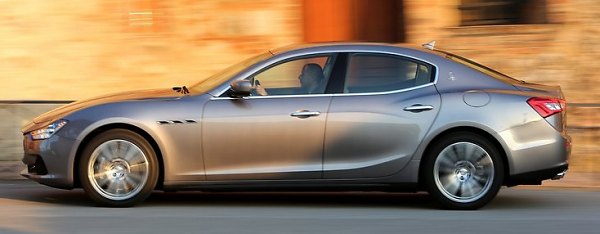
|
So what attracts people to buy the Maserati executive
saloon? Its GT looks, special interior and unique engine sound are
definitely important factors. What about driving dynamics?
If you talk about performance, it is not a strong reason to buy the
Maserati. Although the fastest Ghibli is already quicker than the old
Quattroporte, it is not necessarily as fast as German machines. German
executive cars these days can be very quick – for example, Car and
Driver timed Audi S6 finishing 0-60 mph in an astonishing 3.7 seconds,
who could imagine this in the days of Porsche 959? Fortunately, the
Maserati's loud and addictive exhaust note can lead you believe it was
even quicker. As we always say, performance is nothing if you cannot
feel it. The Italian just does this better than German.
Inevitably, the flipside of the louder exhaust note is the lack of
cruising refinement. Wind and road noise are also more than class
norms, blame to the frameless windows. This is still tolerable to keen
drivers, but less so is the harsh ride. Despite of the aforementioned
small wheels and Skyhook suspension, the Ghibli rides firmly even in
Comfort mode. It fidgets over expansion joints and crashes over
potholes. On undulating roads as well as high-speed cornering, it is
not as composed as Jaguar XF or BMW 5-Series. I believe the problem can
be sorted out by further tuning to the adaptive damping software, but
as it is now, it can't quite match the best rivals in terms of ride and
handling.
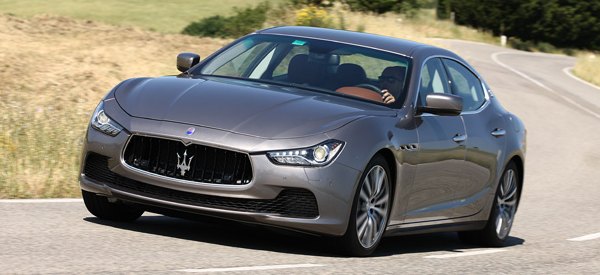
|
However, the Ghibli is more entertaining to drive than its
mainstream rivals. It does feel agile, better balanced and more willing
to turn in, although the hydraulic steering is not as feelsome as you
would expect. Should you switch off the ESP, it will power slide
cleanly in a controlled manner, thanks to the standard LSD. No, the
driving experience isn't as magic as the old Quattroporte with its
lighter nose, more transparent steering and razor-sharp throttle
response, but it is still entertaining enough to distinguish itself
from most rivals.
In the end, BMW 5-Series is still the most versatile in the class,
whereas Jaguar XF is still the best driver's car. The Maserati is not
going to threaten their positions. However, in my eyes it is truly
special in the executive car class thus it is worth every buyer to
think seriously. While the early cars are flawed in some areas, I
expect Maserati will have them polished in the next couple of years.
This car has potential to be great.
|
Verdict:     |
Published
on 25
Mar 2021
|
All rights reserved.
|
|
Ghibli Trofeo
|
|
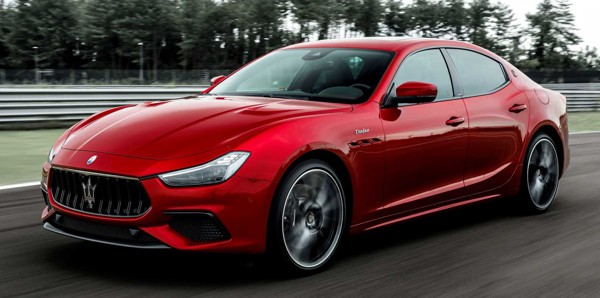
|
|
Maserati
opted to fit the aging V8 instead of Nettuno V6 into this car. A missed
opportunity.
|
|
A strange model launched
at a strange time. The Ghibli is more than 7 years old. Normally it is
time for a full replacement. However, considering its flagging sales,
and the merger of FCA and PSA into Stellentis taking place, it is easy
to see why no replacement is in sight yet. Naturally, to sustain the
life of Ghibli, a meaningful update is necessary. But the introduction
of a flagship performance model on a 7-year-old basis? If I were the
product planner, I certainly would not sign my name on that. Somehow,
the Italian always do things differently, and the automotive world
would not have been so exciting without them.
Trofeo, Italian word for Trophy, is the name of high-performance
Maseratis, just like AMG or M. The first Trofeo model debuted on
Levante SUV, then followed by Ghibli and Quattroporte. While the large
four-door limousine has always been offering V8 power in the form of
GTS, the smaller Ghibli gets the Ferrari-built 3.8 twin-turbo V8 for
the first time. All 3 Trofeo models share the same engine and output
rating: 580 horsepower released at 6750 rpm, and 538 pound-foot of
torque from 2250 to 5250 rpm. They are powerful, but not quite as
powerful as German rivals. For example, Mercedes-AMG E63S and BMW M5
Competition make 612hp/627lbft and 625hp/553lbft, respectively.
Moreover, they have standard 4WD system to put that power to the road
without losing in wheel spin, so they are capable to get to 60 mph from
rest in just over 3 seconds. In contrast, Maserati’s Q4 system was not
designed to work with the V8, so the rear-drive Ghibli takes 4.1
seconds to do the same sprint, despite the help of launch control. It
overshadows its German rivals only with its 203 mph top speed, which is
not regulated.
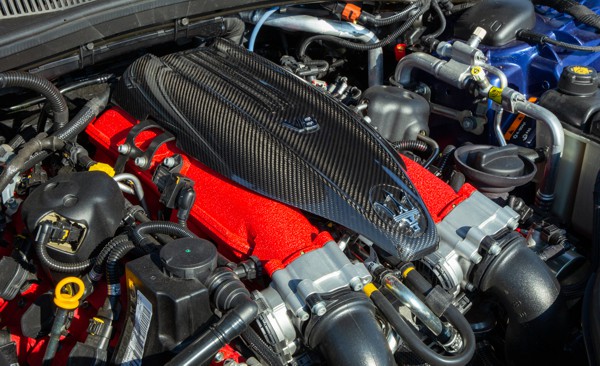 |
|
The
Italian V8 noise is largely filtered by the car’s double-glazing
windows.
|
|
The introduction of V8 model to Ghibli line shows the chaos in FCA’s
product planning. On the one hand they were developing a 3-liter V6
called Nettuno for a supercar called MC20, on the other hand they put
the aging V8 under the bonnet of a mid-size sedan. How ridiculous! Even
more ridiculous is, the Nettuno V6 actually produces more power (630hp)
and exactly the same level of torque. Wouldn’t it be wiser to equip the
Ghibli Trofeo with the new V6? If so, the car would be lighter, faster
and more agile. The weight and space saved by the smaller engine would
allow the addition of Q4 system, and electrification could follow at
the next stage, so you will get continuous and sustainable development
of the Trofeo model, and the electrification will serve the rest of the
range, too.
As it turns out, the Ghibli Trofeo is destined to be an old-school
performance sedan. It is still gifted with Italian charm: the noise of
the Italian V8, a handling focusing on balance rather than grip and
surefootedness, and an interior crafted in leather, Alcantara and
carbon-fiber inserts. Using a mechanical LSD rather than its rivals’
electronic differential, it has no hope to hang on oversteer in fast
bends. You might say it is not supposed to be a track car, so you would
not have opportunity to slide the car anyway. Good point. Ditto the
smaller brakes (380mm up front, 345mm rear), which are sufficient for
road use but not up to the abuse on track. However, what you lose in
the Maserati, you are not compensated in other areas. No matter grip,
traction, poise, stability or steering, it is not exactly first rate.
Even the Italian V8 noise is largely filtered by the car’s
double-glazing windows – it is worth noting that today’s Ghibli is much
more refined than the early cars. Worse still, the Trofeo costs more
than its German rivals – starting at £104,000, versus the M5
Competition's £98,000. In the end, only exclusivity sells. Being
a far rarer sight on streets, the Ghibli is a niche choice, and the
Trofeo will be rarer still, so rare that it won’t make any impact to
the automotive world.
|
Verdict:    |
|